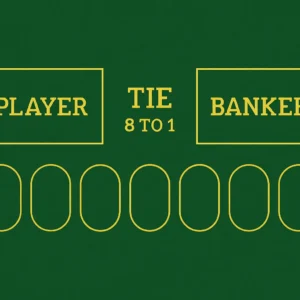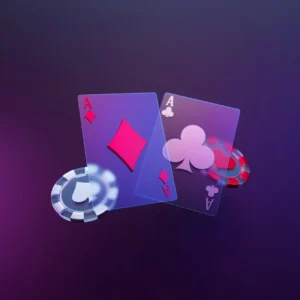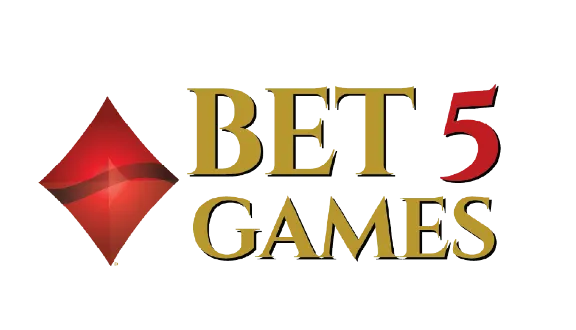Published on September 18, 2025
Author : Bet5Games Editorial Team
Step into any modern casino, and the baccarat tables will greet you with a dazzling display of electronic screens filled with red and blue symbols. This is the baccarat scoreboard, a powerful tool that transforms the game from one of pure chance into a fascinating exercise in pattern recognition. For the intermediate player, understanding this scoreboard is the key to elevating your game analysis.
This guide will demystify every aspect of the baccarat roadmap. We won’t just tell you what the symbols mean; we’ll teach you the precise logic behind each of the five roads, showing you how to read the trends and make more informed decisions.
What is a Baccarat Scoreboard? The Five Roads Explained

A baccarat scoreboard, also known as a roadmap, is a visual representation of the results from a single shoe of cards. Its primary purpose is to help players track historical outcomes and identify potential patterns or trends as the shoe develops. While it cannot predict the future with certainty, it provides invaluable context about the game’s flow.
The scoreboard is composed of five distinct charts, collectively called the “roads”:
The Big Road: The main road that records the direct results of each hand.
The Bead Plate (or Bead Road): A simple, direct log of every outcome.
The Big Eye Boy: A derived road that analyzes patterns from the Big Road.
The Small Road: A second derived road, offering a deeper level of pattern analysis.
The Cockroach Road: The third and most abstract derived road, tracking more complex patterns.
For this guide, we will focus on the most widely used roads for trend analysis: the Big Road and its three derived children.
The Foundation: How to Read the Big Road
The Big Road is the source of truth for all other roads. It’s simple, direct, and the first chart you must master.
Symbols of the Big Road: Player, Banker, and Ties
The Big Road is displayed on a grid. Results are recorded as follows:
Blue Hollow Circle: Player Win
Red Hollow Circle: Banker Win
Green Slash (through the last circle): Tie
When a Tie occurs, a green line is drawn diagonally across the most recent circle. It does not get its own column. If multiple Ties occur, a small number representing the count is added next to the slash.
Charting Streaks and Chops
The Big Road visualizes winning streaks beautifully.
Streaks: When the same outcome (Banker or Player) wins consecutively, the circles are marked vertically down the same column. A long column indicates a strong streak.
Chops: When the outcome alternates between Player and Banker, a new column is started for each result. This creates a horizontal, “choppy” pattern across the top of the grid. This alternating pattern is often called a “zigzag.”
The Small Road: Uncovering Deeper Patterns
Here is where the real analysis begins. The Small Road is a “derived” road, meaning it doesn’t record direct results. Instead, it records the patterns emerging from the Big Road.
What is the Small Road in Baccarat?
The Small Road helps determine if the shoe is exhibiting consistent patterns. It asks a simple question: “Does the result of the current hand follow the same pattern as the hand that happened one streak ago?” The symbols in the Small Road—solid red and blue circles—do not represent Banker and Player. They represent Chaos (Blue) and Order (Red).
Red Circle (Order/Symmetry): The shoe is behaving predictably. The current column on the Big Road is developing similarly to the previous column.
Blue Circle (Chaos/Asymmetry): The shoe is behaving erratically or “choppy.” The current column is not developing like the previous one.
How the Small Road is Calculated: A Step-by-Step Guide
To calculate an entry for the Small Road, you must look at the latest entry on the Big Road and compare it to a specific historical entry. The rules seem complex, but they follow a consistent logic.
The Small Road’s recording begins after the first entry in the third column of the Big Road.
Here’s the rule: Compare the length of the current column with the length of the column two columns to its left.
Identify the latest entry on the Big Road. Let’s say it’s the 3rd hand in Column 4.
Look back two columns. That would be Column 2 on the Big Road.
Compare the rows:
If the new entry lands in the same row as an entry in the column two to the left (Column 2): This is symmetry. Mark a RED circle in the Small Road.
If the new entry lands in a row where the column two to the left is empty: This is chaos. Mark a BLUE circle in the Small Road.
Special Rule (The “Dragon”): If the current column becomes longer than the column two to its left (forming a “dragon tail”), every subsequent entry in that long column will be RED.
This calculation is repeated for every new hand added to the Big Road.
Interpreting the Small Road: What Do Red and Blue Circles Mean?
A long streak of red circles in the Small Road suggests the shoe is very symmetrical and predictable. A long streak of blue circles suggests the opposite—the shoe is choppy and chaotic. Many players look for a strong red trend in the Small Road as a sign of a stable, “playable” shoe.
Advanced Analysis: Big Eye Boy and Cockroach Road
The other two derived roads, Big Eye Boy and Cockroach Road, operate on the same principle as the Small Road (Chaos vs. Order) but look at different historical points on the Big Road.
The Big Eye Boy: Tracking Repetitive Patterns
Starts Recording: After the first entry in the second column of the Big Road.
Calculation Rule: Compares the current column to the immediately preceding column (one column to the left). It essentially asks, “Is the shoe starting to repeat itself right now?”
The Cockroach Road: The Deepest Level of Trend Analysis
Starts Recording: After the first entry in the fourth column of the Big Road.
Calculation Rule: Compares the current column to the column three columns to its left. This looks for longer-term, more stretched-out patterns.
Comparing the Starting Points and Column Rules
| Road | Starts After Entry In… | Compares Current Column To… |
| Big Eye Boy | Column 2 | 1 Column to the Left |
| Small Road | Column 3 | 2 Columns to the Left |
| Cockroach Road | Column 4 | 3 Columns to the Left |
Practical Strategy: Using the Roads for Betting Decisions
How to Combine Signals from All Baccarat Roads
The true power of the derived roads comes from seeing if they agree. When the Big Eye Boy, Small Road, and Cockroach Road all show RED, it’s a strong indicator of a symmetrical, orderly shoe. This is often called “The Tell.” Conversely, if all three roads are showing BLUE, it signals chaos.
Many advanced players will wait for this confirmation across all three derived roads before feeling confident in a trend. A board where the derived roads are a mix of red and blue is considered inconsistent and harder to analyze.
What Does a “Good” Scoreboard Look Like?
A “good” or “clean” scoreboard is one with obvious, repeating patterns. This might be:
Long, neat streaks (dragons) on the Big Road.
A consistent two-by-two or three-by-three chop.
A strong, consistent red trend across all three derived roads.
Common Mistakes to Avoid When Reading Baccarat Charts
Forgetting the Past is Not Prologue: The scoreboard shows what has happened, not what will happen. Every hand is an independent event with roughly a 50/50 chance.
The Gambler’s Fallacy: Believing that a long streak of Bankers makes a Player win “due.” This is a cognitive bias; the odds do not change.
Over-Complicating It: Stick to one or two roads you understand well. Trying to interpret conflicting signals from all five roads at once can lead to confusion and poor decisions.
Chasing Losses: Never alter your betting strategy solely to recoup losses based on a pattern you think you see. Always play with a clear budget.
Baccarat Scoreboard: Frequently Asked Questions (FAQ)
Do I have to use the scoreboard? No, many people enjoy baccarat as a simple game of chance. The scoreboard is a tool for players who enjoy analyzing the game on a deeper level.
Which road is the most reliable? None are “reliable” for predicting the future. The Big Road is the most important as it’s the source data. The derived roads are simply different ways to interpret that data.
Why aren’t ties shown on the derived roads? Ties are neutral events that don’t break or continue a streak of Player/Banker wins, so they are ignored in pattern analysis for the derived roads.
Can I use this for online baccarat? Absolutely. Nearly all online baccarat games, especially live dealer versions, feature an identical electronic scoreboard for you to use.
Conclusion: The Scoreboard as a Tool, Not a Crystal Ball

Mastering the baccarat scoreboard is a skill that adds a rich, analytical layer to the game. It allows you to engage with the shoe’s history, understand its flow, and appreciate the elegant symmetry that can emerge.
Remember that the scoreboard is a tool for analysis, not a crystal ball. It enhances your understanding and enjoyment of the game but does not change the underlying mathematical odds. Use it to identify favorable trends, manage your decisions, and always practice responsible gaming.
